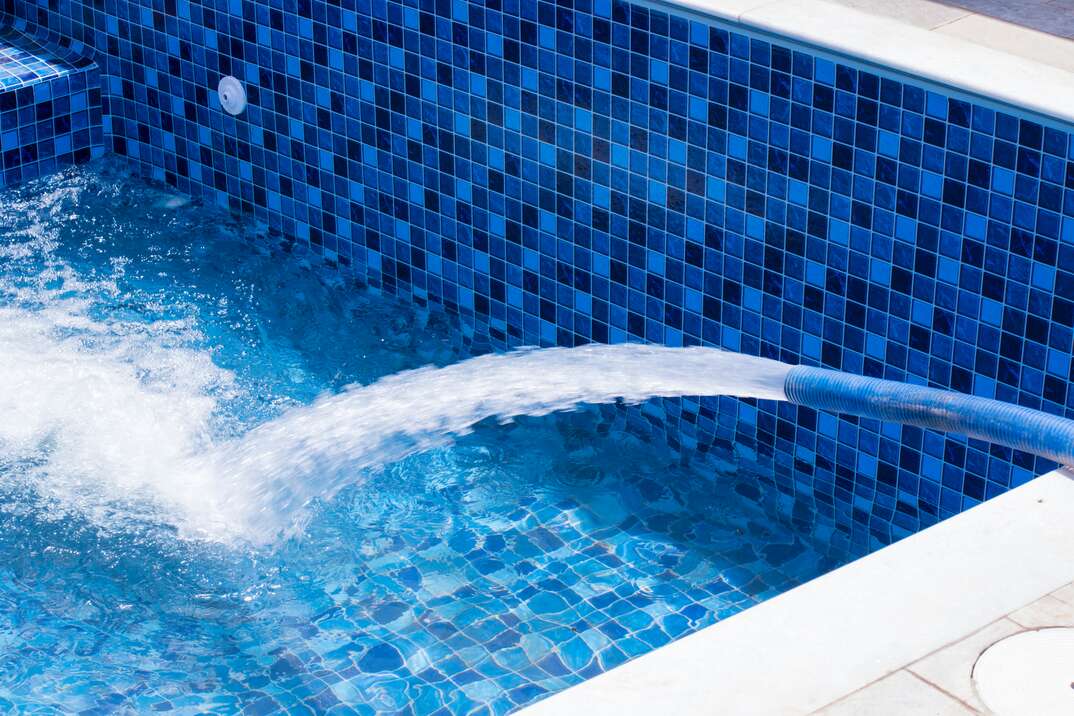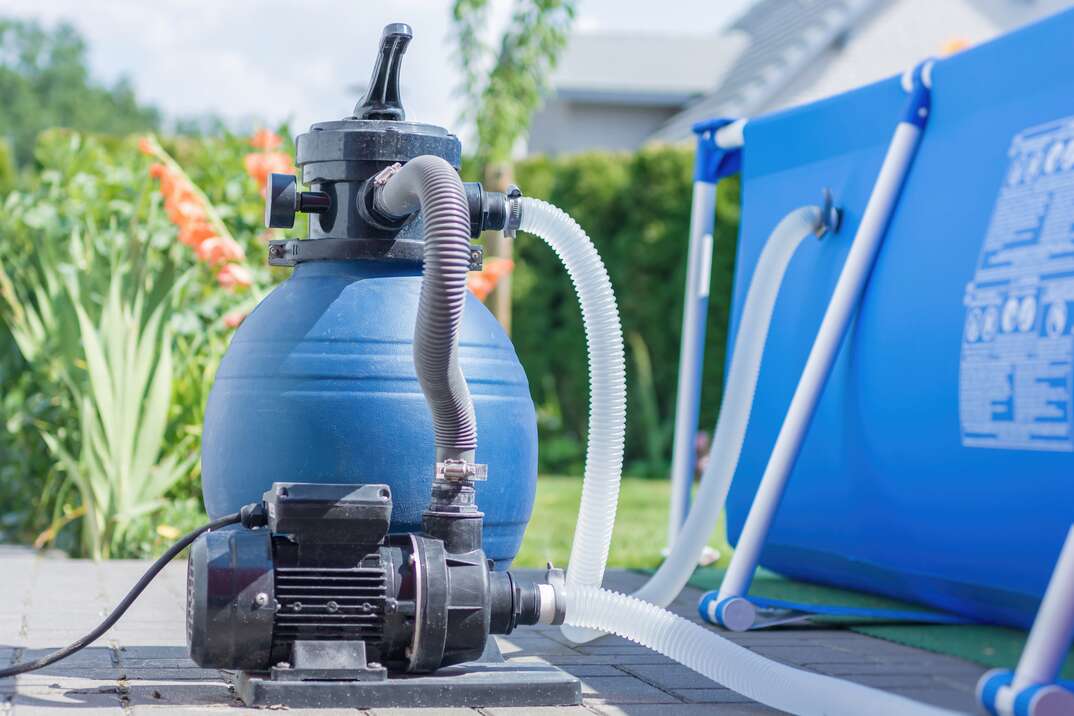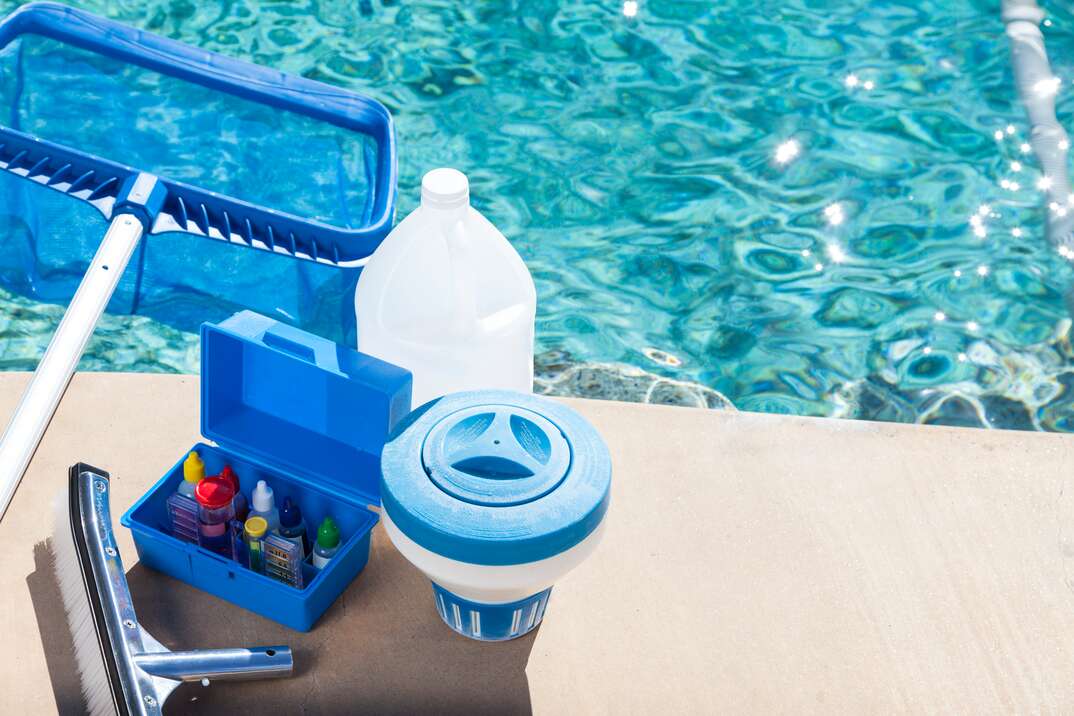How to Open Your Swimming Pool for the Summer

Opening Your Pool at a Glance
- Step 1: Remove cover
- Step 2: Clean water
- Step 3: Fill pool
- Step 4: Remove winterizing plugs
- Step 5: Reinstall drain plugs
- Step 6: Set up pump and filter
- Step 7: Sanitize water
For many people, opening the swimming pool for the season is one of the most exciting parts of summer. While there's nothing more refreshing than diving into a cool pool on a hot day, figuring out how to open a swimming pool can be a real headache.
This May Also Interest You: Putting in a Pool? Here’s Everything You Need to Know
Fortunately, a bit of know-how and the right chemicals can make opening your pool quick and straightforward. Find out how to open a pool using the step-by-step guide below.
How Do You Open Up a Pool for the Summer?
Having a checklist reminding you how to open your pool can help you get it ready for swimming as quickly as possible. It's important to follow the steps exactly without missing anything to ensure a safe, healthy swimming environment. Screenshot or print out this step-by-step guide so that you're prepared come summertime:
Step 1: Remove the Cover
Before you remove the pool cover, use a skimmer net to remove any leaves or other items that have fallen on it over the winter. If there are pools of water sitting on the cover, drain them using a pool cover pump.
Once your pool cover is clear, carefully remove it. It's best to enlist some help for this task; you want to avoid allowing the cover to dangle into the water. Lay the cover flat on the ground and use a sponge and some mild detergent to clean off any dirt and grime so that it's in good condition for the next time you use it. Allow it to dry thoroughly, then roll it up and store it.
Step 2: Clean the Pool
Before you open your swimming pool, you need to give it a thorough clean to remove any debris. Even with a decent cover, your swimming pool can accumulate a lot of dirt and other material over the winter.
Skim any floating material from the surface of the water and use a pool vacuum to hoover up any debris that's sunk to the bottom. It's essential to do a complete job because dirt and debris will put extra stress on the filtering system.
Step 3: Fill the Pool
Once the water in your pool is clean, you'll need to fill it up to replace any water that's drained or evaporated while it wasn't in use. Aim to get the water level halfway between the skimmers and tile line. If you don't have an auto-fill system, you may need to top the water up a few times a week. If you do, check the system to make sure that it's functioning correctly.
Step 4: Remove the Winterizing Plugs
Hopefully, you installed winterizing plugs to stop the pipes from freezing solid during the colder months. You'll need to remove them before you can open the swimming pool for the summer.
Step 5: Reinstall the Drain Plugs
Once you've removed the winterizing plugs, reinstall the drain plugs. Inspect each one to make sure it's in good condition and replace any that show signs of wear and tear. Apply sealant around the reinstalled plugs to prevent any leaks. At this point, you can also reinstall any accessories that you want to use over the summer, like ladders and lights.

Step 6: Set Up the Pump and Filter
Before turning the pump on, use a garden hose to flush any air bubbles out of the suction lines. Then, turn the pump and filter on, making a note of your starting pressure.
Check that the filter is working properly and examine the system thoroughly for leaks. Open all the lines and use the waste mode on the multi-port valve to clear out any dirt or other material. Once you're satisfied that the lines are clean, switch the valve to filter mode.

Step 7: Sanitize the Water
Ensure that the pool water is hygienic by using a pool shock. If you have algae built up inside the pool, use a brush to scrub it off and then treat it using a chlorine-based pool shock. You should also add a metal sequestrant at this stage.
Once you've cleaned the water, check the chemical levels using testing strips. You can then add chemicals to keep the water’s pH balanced and prevent algae and bacteria from building up. You can find out more about which chemicals to use in the guide below. When you're happy with the water's chemical balance, run the filtration system for a day or so before you officially open your pool to swimmers.
More Related Articles:
- Keep Your Pool Running Swimmingly With These Maintenance Tips
- How, When and Why to Drain Your Swimming Pool
- How Much Does A Pool Liner Cost to Repair or Replace?
- How to Clean a Pool Filter
- How Much Does a Pool Heater Cost?
How Do I Clear Up My Pool When I Open It?
Cleaning up your pool before you open it for the summer is essential to ensure it's a hygienic place to swim. It will also reduce strain on your filtering system.
You can clear visible dirt and debris from the water surface using a skimmer net. A pool vacuum is the easiest way to clean the bottom of the swimming pool. Finally, consider adding a chlorine or non-chlorine pool shock to kill any germs before you open the swimming pool. It's best to use a chlorine shock if your water contains algae.
What Chemicals Do You Need to Open a Pool?
You need to add chemicals to your pool water because freshwater won't maintain the correct balance on its own. It may be worthwhile to pay for a pool maintenance service to get your pool in perfect working condition and achieve the correct chemical balance to get you started.
Before you add any chemicals to your pool, use testing strips to check the water balance. You can then add one or more of the following chemicals to balance the levels.
Alkalinity Increaser
You should aim for an alkalinity between 80 and 120 parts per million (ppm). If alkalinity is too low, gradually add an alkalinity increaser. Check the alkalinity level regularly until you achieve the correct level.
pH Decreaser
Conversely, you'll need to add a pH decreaser if the alkalinity of your pool is too high, as pH decreaser makes your pool water more acidic. You should do this before testing the pool's pH, or you risk unbalancing it. You can also use a pH decreaser if your overall pH reading is too high.
pH Increaser
Your pool water's pH reader should be between 7.2 and 7.6. If it's too low, the water will be too acidic. Acidic water could irritate your skin and corrode your swimming pool, and it's one of the main reasons why you might need to replace your pool liner. Gradually add a pH increaser until you achieve the correct reading.
Calcium Hardness Increaser
Ideally, your calcium hardness should be around 180 to 220 ppm. Fortunately, imbalanced calcium isn't as serious as other imbalances, but it's still worth getting the level right before you open your swimming pool. If the level is too low, you can use a calcium hardness increaser to achieve the right balance.
Muriatic Acid
Muriatic acid does the opposite job to calcium hardness increaser and lowers your calcium hardness if it's too high. Bear in mind that muriatic acid will change your pool's alkalinity, so you may need to go back and recheck your total alkalinity after adding it.
Stabilizer
Your pool's chlorine level should stay between 1 and 3 ppm. If you use free chlorine to keep your pool clean, you'll need to add a stabilizer to allow it to function correctly in bright sunlight.
How Much Chlorine Do I Need to Open My Pool?
The amount to chlorine you should add to shock your pool water depends on its size and how high you want the chlorine level to be. If you drained the pool and filled it up from scratch, it's easy to figure out how many ounces of chlorine to add. Try this trick from Globo Surfer: Simply multiply the number of gallons your pool holds by 0.00013 and add that amount of chlorine (in ounces) to achieve a level between 1 and 3 ppm.
If your pool already contained some chlorinated water, you'll need to use a test strip to determine the current balance. If the chlorine level is too low, add more until you achieve the correct balance. As a rule of thumb, you should add 0.00013 ounces of chlorine per gallon of water to increase the chlorine level by 1 ppm.
Once you've achieved the correct level, recheck it weekly and adjust it if necessary. You may need to check the chlorine level more often if you use the pool frequently, or if it gets a lot of direct sunlight.


